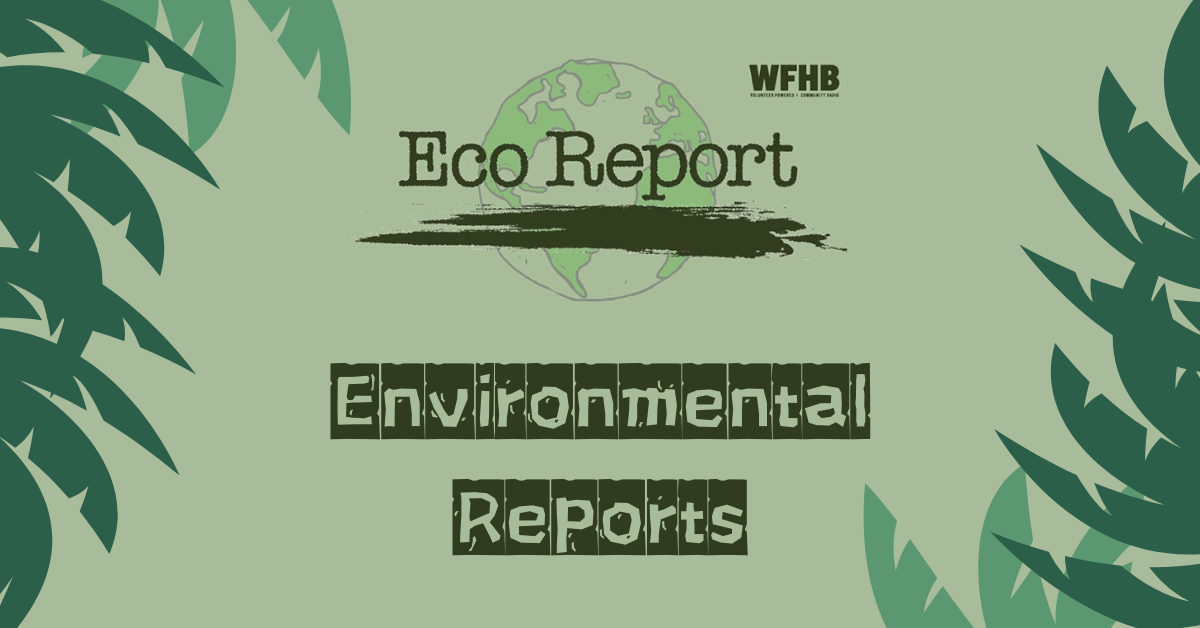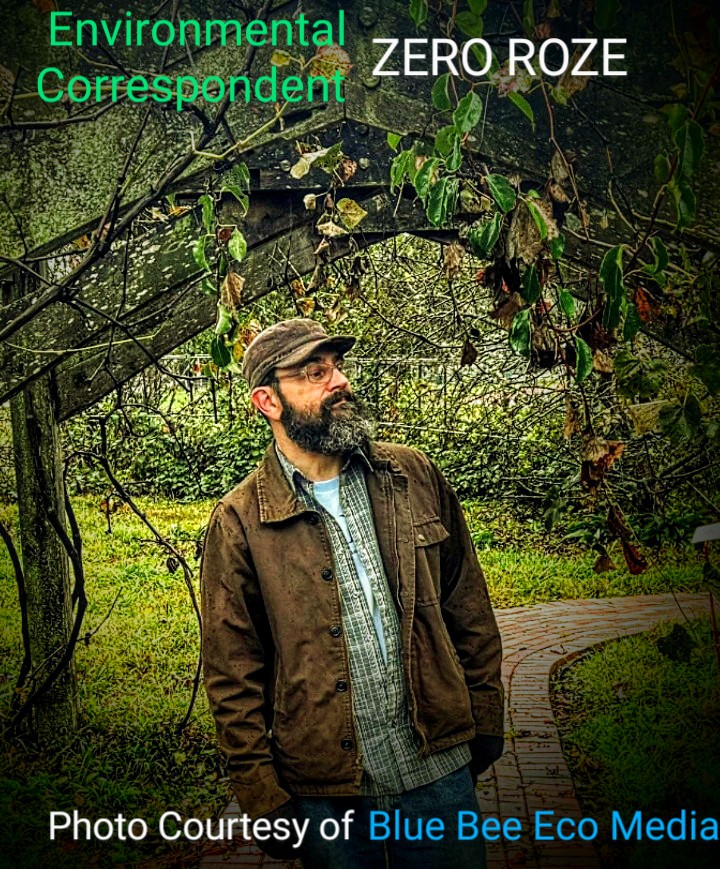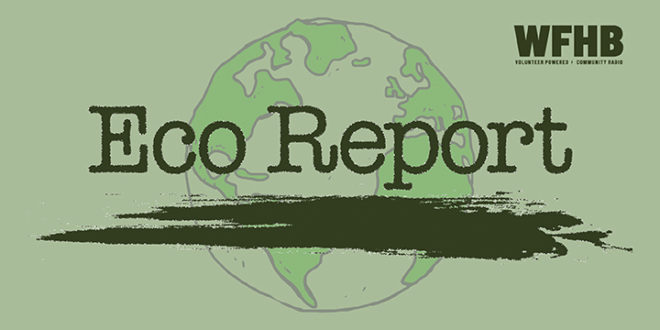Podcast: Play in new window | Download (Duration: 29:12 — 66.8MB)
Subscribe: RSS
In this edition of Eco Report, we hear Part 3 of a discussion on the “EcoBlitz” book release from IU Press and we learn more about how the Indiana back country is actually quite biodiverse, as evidenced by biological surveys facilitated by the Indiana Forest Alliance.

The New York Times reports oil companies are walking back from green energy. As leaders gather for a global climate summit, investors are rewarding oil giants like Exxon Mobil that did not embrace wind and solar. When oil and gas companies made ambitious commitments four years ago to curb emissions and transition to renewable energy, their businesses were in free fall. Demand for the fuels was drying up as the pandemic took hold. Prices plunged. And large Western oil companies were hemorrhaging money, with losses topping $100 billion, according to the energy consulting firm Wood Mackenzie.
Renewable energy, it seemed to many companies and investors at the time, was not just cleaner — it was a better business than oil and gas. “Investors were focused on what I would say was the prevailing narrative around it’s all moving to wind and solar,” Darren Woods, Exxon Mobil’s chief executive, said in an interview with The New York Times. Last week at a United Nations climate conference in Baku, Azerbaijan. “I had a lot of pressure to get into the wind and solar business,” he added. Mr. Woods resisted, reasoning that Exxon did not have expertise in those areas. Instead, the company invested in areas like hydrogen and lithium extraction that are more akin to its traditional business.
Wall Street has rewarded the company for those bets. The company’s stock price has climbed more than 70 percent since the end of 2019, lifting its market valuation to a record of nearly $560 billion in October, though it has since fallen to about $524 billion. The American oil giant’s performance stands in contrast with BP and Shell, oil and gas companies based in London that embraced wind, solar and other technologies like electric-vehicle charging. BP’s stock has fallen around 19 percent in that time, based on trading in London, while Shell’s has climbed about 15 percent.
The market’s renewed acceptance of fossil fuels underscores one of the core challenges of curbing global emissions: Climate change poses risks that compound over decades. Scientists say every fraction of a degree of warming caused by fossil fuels brings greater risks from deadly heat waves, wildfires, drought, storms and species extinction. But investors are focused on making money over months and years. Investors making immediate money propels the energy structure. This certainly will not change over the next four years. During this time warming will exceed 2 degrees Celsius. We venture on into new territory. Expect some events that are not anticipated. When ocean levels rise by 6 feet will there be a re-evaluation?
According to The New York Times, what Trump’s victory means for climate change is not clear. President-elect Donald J. Trump promised to delete the fight against climate change. It has taken a body blow with the election of Donald J. Trump, who calls global warming a “scam” and has promised to erase federal efforts to reduce the pollution that is heating the planet. Mr. Trump told a jubilant crowd Wednesday that the United States, which signed a global agreement last year to transition away from fossil fuels, will instead amp up oil production even beyond current record levels. “We have more liquid gold than any country in the world,” said the president-elect, who won with substantial financial support from the oil and gas industry. “More than Saudi Arabia. We have more than Russia.”
But Mr. Trump’s zeal to repeal the 2022 Inflation Reduction Act, the landmark climate law that is pouring more than $390 billion into electric vehicles, batteries and other clean energy technology, will quickly face a political test. Roughly 80 percent of the money spent so far has flowed to Republican congressional districts, where lawmakers and business leaders want to protect that investment and the jobs they bring. Funded by federal legislation and administered through the U.S. Department of Energy, the State of Indiana will receive approximately $182 million to assist Hoosiers in reducing the cost of energy by improving the energy efficiency of their homes through qualified energy efficiency upgrades, retrofits, and high-efficiency appliances. This allocation to Indiana is less than 0.1 percent of the 390 billion. Was our legislature sleeping, or opposed to seeking major funding?
Across the country, voters elected new members to Congress who have promoted climate action at the state level and could prevent environmental laws from being weakened under Republican leadership. It seems likely that these new congress persons will fail. The 2024 election will likely result in a setback for climate action. Climate advocates in Congress now must work to ward off the worst attempts to weaken the country’s bedrock environmental laws and gut recently passed climate actions from the Biden administration.
There will be immense challenges. There will be more drilling leases with even fewer pollution restrictions. We should expect a lower air quality and a shorter life expectancy in Indiana. There may be attempts to drill in national parks. Trump has said in the past that he would like to sell off the national parks. Trump may try to open the Arctic National Wildlife Refuge to drilling. Trump may try to resurrect the “Pebble Mine” project, which would likely end the salmon fishery in Bristol Bay, Alaska. The only reason the Pebble Mine project was stopped was because Donald Trump Junior said it would ruin his favorite fishing spot. Trump will certainly gut the EPA of its scientists, and replace a few of them with young people who have no scientific background.
Saudi Arabia is a ‘Wrecking Ball’ in Global Climate Talks, according to the New York Times. Despite endorsing a transition away from fossil fuels last year, Saudi officials have since worked to undermine it in at least five U.N. forums, diplomats said. As United Nations climate talks enter their final week in Azerbaijan and G20 leaders gather in Brazil, diplomats from Saudi Arabia, the world’s top oil exporter, are working to foil any agreement that renews a pledge to transition away from fossil fuels, negotiators said.
“Maybe they’ve been emboldened by Trump’s victory, but they are acting with abandon here,” said Alden Meyer, senior associate with E3G, a London-based climate research organization, who was at the talks in Azerbaijan. “They’re just being a wrecking ball.” Negotiators say it’s part of a yearlong campaign by Saudi Arabia to stymie an agreement made last year by 200 nations to move away from oil, gas and coal, the burning of which is dangerously heating the planet.
Saudi Arabia was one of the signatories to that deal, but has been working ever since to bury that pledge and make sure it’s not repeated in any new global agreements, according to five diplomats who requested anonymity to discuss the closed-door negotiations. The election of Donald J. Trump has cast a pall over the climate negotiations in Azerbaijan, known as COP29. Mr. Trump has promised to withdraw the United States from the global fight against climate change and increase the American production of fossil fuels, which is already at record levels. That may be emboldening Saudi officials at the current climate talks, analysts say. On Saturday, Yasir O. Al-Rumayyan, the chairman of the board at Saudi Aramco, the state petroleum company, sat ringside with Mr. Trump at a U.F.C. fight in Madison Square Garden in New York City.
China’s soaring emissions are upending climate politics, according to the New York Times. For many years, wealthy places like the United States and Europe have had the biggest historical responsibility for global warming and have been tasked with taking the lead in stopping it. China’s astonishing rise is upending that dynamic. Over the past three decades, China has built more than 1,000 coal-fired power plants as its economy has grown more than 40-fold. The country has become by far the largest annual emitter of greenhouse gases in the world.
The United States has still pumped more total planet-warming pollution into the atmosphere since the 19th century, in part because the country has been burning coal, oil and natural gas for longer. But China is quickly catching up. Last year, China for the first time passed Europe as the second-largest historical emitter, according to an analysis published by Carbon Brief, a climate research site. When humans burn fossil fuels or cut down forests, the resulting carbon dioxide typically lingers in the atmosphere for hundreds of years, heating the planet all the while.
That’s why historical emissions are often used as a gauge of responsibility for global warming. China, for its part, has promised that its emissions will peak this decade and then start falling. The country is installing more wind turbines and solar panels than all other nations combined and leads the world in electric vehicle sales. But even with China’s shift to low-carbon energy, the Carbon Brief analysis found, the nation’s historical emissions are projected to approach those of the United States in the coming years.
Feature Report
In this week’s feature report we hear Part 3 of a discussion on the “EcoBlitz” book release from IU Press and we learn more about how the Indiana back country is actually quite biodiverse, as evidenced by biological surveys facilitated by the Indiana Forest Alliance. The full interview is available as an Eco Report EXTRA, found online at WFHB.org.



- Learn about the Earth’s Most Venomous Snakes at Brown County State Park on Saturday, December 7th, from 2 to 2:45 pm. Join the naturalist at the Nature Center for a presentation about snakes and their venom.
- Learn about rocks and minerals in Indiana at a Mine Your Craft program at McCormick’s Creek State Park on Sunday, December 8th, from 1 to 1:30 pm. Meet in the Nature Center to create a pixel art mineral or rock block.
- Whooper Wednesday’s will continue at Goose Pond Fish and Wildlife Area every Wednesday until February 26th. Meet at the Visitor’s Center at 8 am to walk around the property to see if you can spot the endangered Whooping Crane.
- You can take a Wolf Cave Hike at McCormick’s Creek State Park on Friday, December 13th from 2 to 3:30 pm. Learn all about the impact the tornado had on Wolf Cave. The cave is wet, damp and narrow. Bring a flashlight.
- Take a Full Moon Hike at Spring Mill State Park on Saturday, December 14th, from 7 to 7:30 pm. Experience the park at night and learn the history and folk lore of the full moon. The December Full Moon is called the Full Cold Moon!
Credits:
On Air………………………………….Julianna Dailey
On Air………………………………..Frank Marshalek
Headlines…………………………………..Norm Holy
Feature Report……………………………..Zero Roze
Script…………………………………..Julianna Dailey
Events Calendar………………………Julianna Dailey
Engineer……………………………..Branden Blewett
Are you looking for a way to make a difference on environmental issues?
Eco Report is looking for reporters, engineers, and segment producer to report facts on how we’re all affected by global climate disruption and the ongoing assaults on our air, land and water. We also celebrate ecologists, tree huggers, soil builders and other champions who actively protect and restore our natural world, particularly those who are active in south central Indiana. All levels of experience and all ages are welcome, and we provide the training you’ll need. WFHB also offers internships.
To volunteer for Eco Report, call at (812) 323-1200, or e-mail [email protected].
 WFHB Bloomington Community Radio
WFHB Bloomington Community Radio


